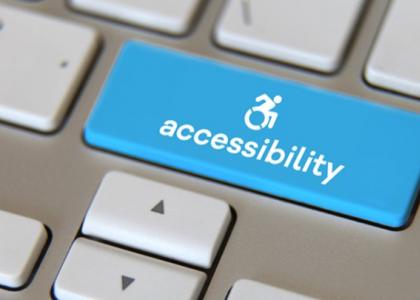World Usability Day: the importance of usability and accessibility in software

We look at the value of usability and accessibility in software and celebrates the application of these in our own products.
World Usability Day was established in 2005 to celebrate and educate people on how usability impacts our daily lives. As well as creating awareness of the importance of user-centred design, World Usability Day celebrates the progress made in creating usable and accessible products. In support of this day, this article looks at the value of usability and accessibility in software and celebrates the application of these in our own products.
Although usability and accessibility differ in their definitions, they overlap significantly when considering universal design and inclusion. Usability focuses on design that ensures effectiveness and efficiency. However, without valuing the needs of all people, such as those not fluent in the language, interacting on mobile devices, and people with disabilities it creates unnecessary barriers within the user experience.
The World Wide Web Consortium (W3C) have created Web Content Accessibility Guidelines (WCAG) as an international standard for accessibility that meets the needs of people and organisations from around the world. Not only does WCAG consider the needs of those with a range of disabilities, but it also ensures web content is more usable in general. The recognition of these standards globally and their clear benefits to user interactions with technology is why organisations, including MHR, adopt these guidelines.
iTrent and People First, have been designed with usability and accessibility in mind. The Accessible view in iTrent enables access to screens that meet WCAG 2.0 and 2.1 Level AA standards. We continue to actively engage with people at the Royal Institute for Blind People (RNIB) to understand accessibility requirements and make improvements to our software; from changes that aid the use of screen readers to resizing by up to 200% zoom without content overlapping to colour contrast that meets the AA accessibility standards.
Similarly, People First has been built with usability and AA standard accessibility embedded in the core design. Our product and software departments consider the use of accessibility aids including screen readers when selecting features, such as buttons or text fields, to ensure universal usability. This includes consistency across features, such as typography intuitively linked to colours. Labels are also communicated with the support of iconography as well as colour so those with vision impairments – for example: colour blindness – are still able to efficiently navigate the product.
Additionally, both iTrent and People First are fully compatible with mobile devices with their screen layouts, content formatting, and functions adapted to suit the smaller screen size to enable effective usability.
Usability is crucial for a satisfying user experience, allowing people to focus on their task without being distracted by unnecessary complexities in the software design. Considering accessibility in this allows for the adoption of universal usability and creates inclusive software. We are proud of how our software design ensures a positive experience for all our customers and we endeavour to continue to implement improvements in the future.



